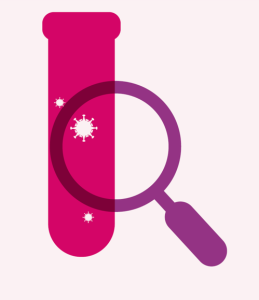This sluggish progress for children was attributed to the fact that children are largely dependent on their adult caregivers. In 2022, Zimbabwean women surpassed the 95-95-95 targets recording 98–97–95 compared to Zimbabwean men who stood at 93–91–89.
Speaking to journalists at a Pediatric HIV media science café organized by the Health Communicators Forum (HCF) on Friday, Elizabeth Glazer Pediatric AIDS Foundation (EGPAF) Zimbabwe Technical Advisor Dr Hilda Bara said the low ART coverage for children was a global trend.
“Generally, across the globe, we noticed that children are disproportionately affected or impacted by HIV. And this impact is actually higher in infants and young children. Partly because they depend on adults.
“So really what happens to children, infants, young children that are not able to make decisions on themselves will now depend on the health seeking behaviour of adults who are playing the care giver role,” she said.
According to Dr Bara’s presentation, in 2021 the percent of children who knew their HIV status was 72.5 percent. Of those tested, 100 percent where put on ART but 79.3 percent of those on ART had their viral load suppressed. She while ART initiation was 100 percent in 2021, it was saddening that they were missing out on the testing part since 2016 which had 66 percent of children knowing their status.
“From 2016 up until now I think when you look at children, where we have done well is just initiating them ART which has been consistent at 100 percent but we have been missing a significant proportion of the children that are living with HIV where in 2016 we missed out on 32 percent,” Dr Bara noted.
She added that children between ages zero to 15 are poorly monitored when it comes to viral load suppression which is achieved by constant and timeous taking of ARVs.
“And in 2021 we missed almost a quarter of the children that are living with HIV and we only managed to test about 70 percent. When they are initiated on ART they also don’t achieve viral suppression at rates that apply to adults. Why? Because the way babies take their medication depends on us adults. It’s different from an adult who knows when it’s 8 o’clock I need to take my medication.
“But a baby may depend on a caregiver. And some of them are orphaned and there is no one to monitor how they take their medication. Some of them are in boarding schools, and because there are disclosure issues without disclosing to the boarding master or matron, they may not take their medication,” Dr Bara added.
She said they need to diagnose and initiate over 80 000 children on ART.
“So, if HIV is not treated, about half of the babies will die before the age of two and three quarters of them would have died by the age of five. So this also tells us we have a lot of work to do in terms of making sure that undiagnosed HIV in children is picked up and those that are tested positive are initiated on treatment early.
“Otherwise, if we don’t do that then we lose half of them at two years and three quarters at the age of five. And we have an estimated 82 000 children that are living with undiagnosed HIV. We need to look for them. This is in Zimbabwe. We need to look for them. We need to test them and we need to initiate them on treatment,” Dr Bara said.
According to the UNAIDS 2023 Global AIDS Update, about 82% of pregnant or breastfeeding women living with HIV were receiving antiretroviral therapy in 2022, up from 48%in 2010.
“Together, these services have prevented over 3.4 million HIV infections in children since 2000, and they have drastically reduced numbers of AIDS-related deaths in children since the peak in 2004, when there were 360 000 AIDS-related deaths, to 84 000 in 2022.
“This has contributed to a decrease in overall deaths in children, especially among children aged 5–14 years, in whom the proportion of deaths that are AIDS-related has declined considerably (SDG 3). Most of these deaths have been averted in sub-Saharan Africa, the region with the highest mortality rates among children,” said UNAIDS in the report.

